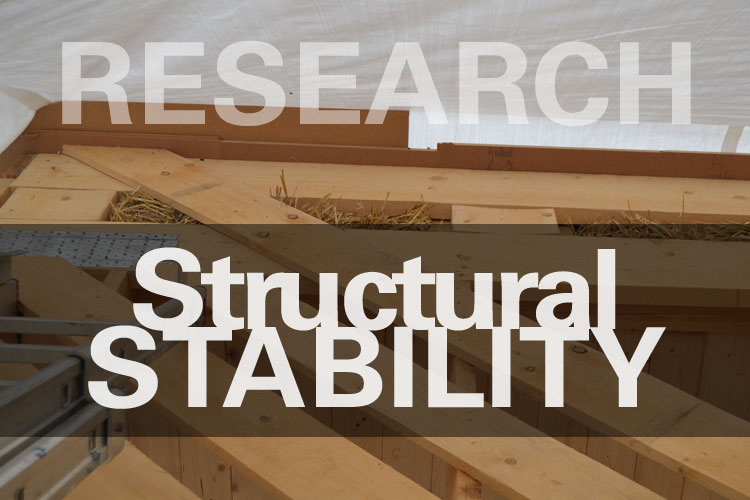The objective of this research was to provide structural performance data and information for straw bale home builders, building inspectors and engineers. Structural testing of 2 full-scale straw bale walls was undertaken. The tested walls were instrumented and subjected to compressive vertical loading. The results were interpreted in the light of the expected loads that must be withstood in single-storey domestic applications. Two specimens of straw baled walls were tested using two techniques for measuring displacement under a maximum load of 2 tons. Pre-compression improved the initial stiffness of the straw bale walls. The displacements recorded ranged between 7- 10mm. It was concluded that the placement of a wooden cap plate on top of the straw bale wall is important to ensure uniform transfer of the loads along the whole length of the wall. Also, this technique of building would confine the connection between the wire mesh, the straw and the plaster to ensure the sandwich panel behavior in the section.
Authors:
- Garas, Gihan L K
- Allam, Mostafa E
- Gawad, Ahmad K Abdel
- Moneim, Mohamed Abdel




